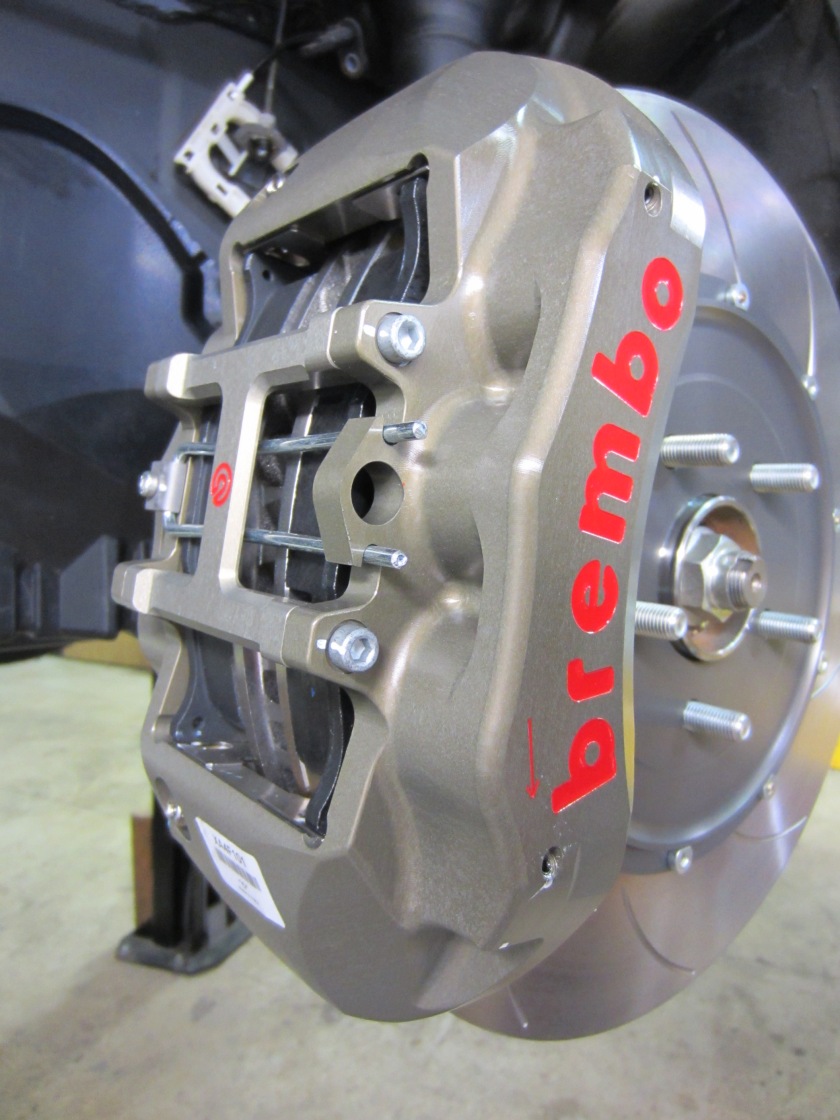From the Beginning
At an MSRP of around $34,800 what did the original E30 M3 offer its drivers? Technically, the 1987- 1991 E30 M3s for the US market were closely based on the technology of their European counterparts. The S14 is based on the S38 six-cylinder head and block, which explains its somewhat bulky size. It is a durable motor that can run 100,000 miles before requiring a rebuild to remain in top shape. The primary elements of the engine are pretty traditional: iron block with cylinder liners, short stroke steel crankshaft with eight counterweights, aluminum cylinder head with 10.5 to 1 compression, four-valve per cylinder hemispherical combustion chambers (yes, its got a Hemi), chain driven double overhead camshafts, tubular headers and twin-tract catalytic converters.
The results produced an engine with 83.4 hp/l for a total of 192 hp at 6,750 RPM in US trim (200 for non-cat Euro models) and 170 lb-ft torque. The actual performance of the US model trailed the European non-cat version more than the power numbers would suggest. The British magazine Autocar reported 6.5 second 0- 60 mph times for the European M3; Motor Trend recorded 0- 60 mph times for the US specification model at 8.1 seconds and ¼ mile time of 16.0 seconds at 88 mph. (Fuel economy– as if a sporty car should concern itself with that– was EPA rated 17 city and 29 highway.)
Despite the slower times, Motor Trend declared that driving the E30 M3 was “an absolute hoot”, thanks in large part to the race bred suspension tuning.
The Story Evolves from there
Models dubbed “evolutions” became necessary to remain at the top in motorsports. As road cars, the Evo M3s were not all equal. Some of the earlier 2.3- liter engines tuned to 220 hp were slower than their 200 hp counterparts thanks to taller gears.
The Evolution I ran subtlety upgraded aerodynamics but stuck with the 200 hp Euro 2.3 engine.
The Evolution II made a larger leap from the original. The engine, with upgraded cams, pistons and flywheel, produced 220 hp under its white air box and cam cover (both with M Sport stripes). It also sported BBS mesh wheels, an additional front spoiler, brake ducts and an extra lip on the rear wing.
And then there was the 2.5- liter Evolution Sport
The final competition-bred E30 M3 was the 2.5- liter engine Evolution Sport, introduced in 1990. Just 600 examples were made of this very special car.
The 2.5- liter was conceived purely as a challenger against the similarly sized Mercedes-Benz 190 Cosworth. The Mercedes had been equipped with full-production 2.5- liter 4-cylinder engines for several seasons by the time BMW followed suit. The primary changes were a capacity increase from 2,302 cc to 2,467 cc thanks to an elongated crankshaft throw, and slightly larger bores. The result was an impressive gain of 46 hp and 6 lb-ft torque over the “normal” US spec engine.
Top speed jumped, despite the higher downforce set-up of the front spoiler and rear wing, from 140 mph to 156 mph. More noticeable on the street was the added power throughout the rev range, which resulted in a respectable 6 second 0- 60 mph time (2.1 seconds quicker than the 2.3- liter!) City EPA rating even went up, to 18.8 mpg (versus 17.0 mpg).
The performance of the 2.5- liter S14.1 is legendary, thanks to the many talents of BMW’s race engineers. “It was more difficult than the work we did in Formula,” commented one insider to Jeremy Walton, author of the 3 Series Companion, “it was quite a big four cylinder, and we got it to rev past 11,000 rpm”!
The final M3 Sport Evolution III was a great swan song to a fundamentally simple front-engine, rear-drive, four-cylinder M3. Very few BMWs since have been able to match its character.
And this leads to our project…

The Evolution of Henna
Working together with Tony Salloum, owner of VAC Motorsports and noted authority on all things E30 M3 and S14, we propose to rebuild Henna’s engine back to better than new. This includes:
VAC Stage 3 Performance cylinder head work, which includes 6-Angle intake machining, full radius exhaust valve job, all-new valve guides, refreshed and blueprinted valves to VAC specifications, balance valve springs, plus much more. Also, camshafts, pistons and connecting rods. Most importantly, and why I talked so highly of the 2.5- liter Sport Evolution III, an elongated crankshaft throw will make the stock block into a 2.5- liter capacity engine.
Tony has convinced us that the added capacity of a stroked 2.5- liter (or 2.7- liter) engine is the perfect way to go for the spirited street driving and occasional track duty scenario we’re looking at. The added mid-range torque will make the car much more of a pleasure to drive on the street. And the added stroke takes none of the high revving capability, or top end punch, away. Between the added capacity, the honed intake and more robust internals, Henna will be a real everyday performer for decades to come. And none of this work will detract from the value of the car, since it is internal, and reversible if desired. Because of the track history of the car, it is our opinion that it will actually add to the bottom line. The car is worth it.









